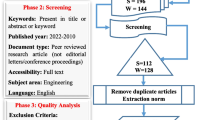Abstract
The ability to efficiently create robust and reliable dissimilar metal joints has the potential to enable new functionalities and reduce the manufacturing costs of medical devices. The need for dissimilar material welds in the medical device industry is driven by the unique properties exhibited by biocompatible materials such as stainless steel and titanium, as well as shape memory materials such as NiTi. Many material pairs, however, suffer from significant intermetallic phase formation during welding which greatly reduces their strength. This study investigates the microstructures and strength of the laser fusion-welded titanium–stainless steel dissimilar material pair as a simplified model of the NiTi–stainless steel pair. Compositional and structural analysis of the weld pool is performed and fracture morphologies are analyzed in different regions of the weld joint. The role of weld pool geometry, heat flow, and quench rate on the resultant phases, microstructures, and strength of the welds is discussed.
Similar content being viewed by others
References
Bauer I, Russek UA, Herfurth HJ, Witte R, Heinemann S, Newaz G, Mian A, Georgiev D, Auner GW (2004) “Laser microjoining of dissimilar and biocompatible materials,” Proceedings of SPIE, pp. 454–464
Ghosh M, Chatterjee S (2005) Effect of interface microstructure on the bond strength of the diffusion welded joints between titanium and stainless steel. Mater Charact 54(4–5):327–337
Lee MK, Lee JG, Choi YH, Kim DW, Rhee CK, Lee YB, Hong SJ (2010) Interlayer engineering for dissimilar bonding of titanium to stainless steel. Mater Lett 64(9):1105–1108
Li M, Sun D, Qiu X, Liu J, Miao K, Wu W (2007) Effects of silver based filler metals on microstructure and properties of laser brazed joints between TiNi shape memory alloy and stainless steel. Sci Technol Weld Join 12(2):183–189
Ghosh M, Chatterjee S (2002) Characterization of transition joints of commercially pure titanium to 304 stainless steel. Mater Charact 48(5):393–399
Raghavan V (1987) Phase diagrams of ternay iron alloys. ASM International, Metals Park
Sun Z, Ion JC (1995) Review laser welding of dissimilar metal combinations. J Mater Sci 30:4205–4214
Vollertsen F, Grupp M (2005) Laser beam joining of dissimilar thin sheet materials. Steel Res Int 76(2):240–244
Li MG, Sun DQ, Qiu XM, Yin SQ (2006) Corrosion behavior of the laser-brazed joint of TiNi shape memory alloy and stainless steel in artificial saliva. Mater Sci Eng, A 441:271–277
Kundu S, Ghosh M, Laik A, Bhanumurthy K, Kale G, Chatterjee S (2005) Diffusion bonding of commercially pure titanium to 304 stainless steel using copper interlayer. Mater Sci Eng, A 407(1–2):154–160
Graff K (2005) New developments in advanced welding. Woodhead Publishing, Cambridge
Yu C, Wu MF, Lu H (2006) Factors influencing formation and growth of coarse Ti–Fe compound in Ti–Fe eutectic reaction. Sci Technol 11(3):265–271
Louzguine-Luzgin DV, Louzguina-Luzgina LV, Kato H, Inoue A (2005) Non-equilibrium Ti–Fe bulk alloys with ultra-high strength and enhanced ductility. Mater Res Soc Symp Proc 851:3–8
Polmear I (2005) Light alloys. Butterworth-Heinemann, Oxford
Ray R (1972) The constitution of metastable titanium-rich Ti–Fe alloys: an order–disorder transition. Metall Trans 126(3):362–629
Gordon P (1983) Principles of phase diagrams in materials systems. Robert E. Krieger Publishing Company, Malabar
Jansson B (1993) The thermo calc project. Thermochim Acta 214(1):93–96
Ely KJ (2001) Conduction welding, handbook of laser materials processing. Magnolia Publishing, Orlando, pp 354–357
ASTM (2009) Standard test methods for tension testing of metallic materials. ASTM International, West Conshohocken
Kale GB, Patil RV, Gawade PS (1998) Interdiffusion studies in titanium-304 stainless steel system. J Nucl Mater 257(May):44–50
Author information
Authors and Affiliations
Corresponding author
Rights and permissions
About this article
Cite this article
Satoh, G., Yao, Y.L. & Qiu, C. Strength and microstructure of laser fusion-welded Ti–SS dissimilar material pair. Int J Adv Manuf Technol 66, 469–479 (2013). https://doi.org/10.1007/s00170-012-4342-6
Received:
Accepted:
Published:
Issue Date:
DOI: https://doi.org/10.1007/s00170-012-4342-6




